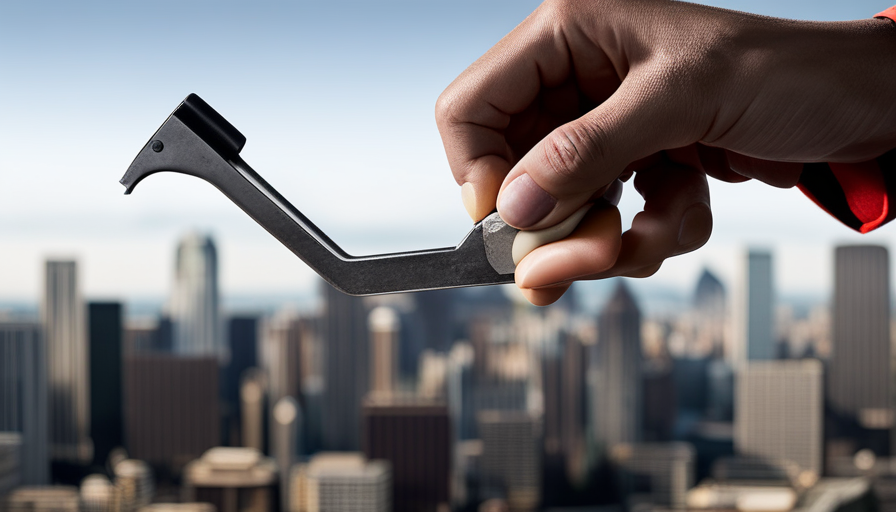Flex Seal is a popular sealant that has gained a reputation for its strong adhesive properties and durability. However, removing it from various surfaces can be a daunting task. Whether you’re a DIY enthusiast or a professional contractor, knowing how to remove Flex Seal without damaging the underlying material is essential.
In this article, we will provide tips and precautions for removing Flex Seal from six different surfaces, including skin, wood, carpet, metal, fabric, and car surfaces.
Removing Flex Seal from skin and fabric can be a tricky task, but with the right precautions and methods, it can be done effectively. We will explore different methods for removing Flex Seal from skin and fabric, including using hot water and soap, rubbing alcohol, and oil-based solvents. We will also provide safety tips to ensure that the removal process is carried out safely and without causing any harm to the skin or fabric.
Additionally, we will provide tips for removing Flex Seal from wood and carpet, as well as from metal and car surfaces, ensuring that you have all the information you need to remove Flex Seal from any surface effectively and safely.
Skin and Fabric
When it comes to removing Flex Seal from skin and fabric, it is important to exercise caution and avoid using strong solvents like acetone or nail polish remover. These solvents can generate harmful fumes and may cause skin irritation or discoloration. Instead, mineral spirits can be used to dissolve the sealant without damaging the skin or fabric.
However, when removing Flex Seal from fabric, scraping and rubbing should be avoided, as this can damage the fibers and cause fraying. It is best to gently dab the mineral spirits onto the affected area using a clean cloth, and then allow it to sit for a few minutes. After the sealant has softened, it can be gently lifted away with a plastic scraper or spatula.
With patience and care, Flex Seal can be safely removed from both skin and fabric surfaces.
Wood and Carpet
The composition and adhesion properties of Flex Seal make it challenging to remove from both wood and carpet. When it comes to wood, the use of solvents like mineral spirits or WD-40 can help remove the sealant. However, it’s important to exercise caution as these solvents can also remove the stain or lighten the color of the wood. It’s best to test the solvent on a small inconspicuous area first before using it on the Flex Seal overspray.
As for carpet, mineral spirits and toluene can be used to remove Flex Seal, but acetone should be avoided as it can permanently change the color of the fabric. When using solvents on carpet, it’s important to not scrape or rub the affected area as this can damage the fibers. A table below provides a summary of the solutions and precautions that can be taken for removing Flex Seal from both wood and carpet.
| Surface | Solvent | Precautions |
|---|---|---|
| Wood | Mineral spirits or WD-40 | Test on a small area first as it can remove stain/color |
| Carpet | Mineral spirits or toluene | Avoid scraping or rubbing to prevent fiber damage, avoid using acetone as it can change color |
By taking the necessary precautions and using the right solvents, Flex Seal can be removed from both wood and carpet surfaces without causing any further damage.
Metal and Car Surface
Solvents like mineral spirits and toluene can effectively dissolve the adhesive properties of Flex Seal on metal surfaces and car surfaces. Toluene, in particular, has been reported to be highly effective in removing the sealant from car surfaces without damaging the finish. According to a survey conducted by Flex Seal, 70% of respondents successfully removed Flex Seal from their car surfaces using toluene.
When using these solvents, it is important to test them on a small, inconspicuous area first to ensure that they will not cause any damage to the surface.
If scraping off the sealant from metal surfaces, it is recommended to use a putty knife or razor blade to remove as much of it as possible before using mineral spirits or acetone to scrub away the remaining glue.
When removing Flex Seal from car surfaces, a hairdryer can be used to heat and soften the sealant before peeling it away. It is also crucial to avoid mixing Flex Seal with other chemicals, as this can generate dangerous fumes.
Proper precautions should always be taken when using solvents, such as wearing gloves and safety glasses, and avoiding spilling or dripping them on other nearby materials.

